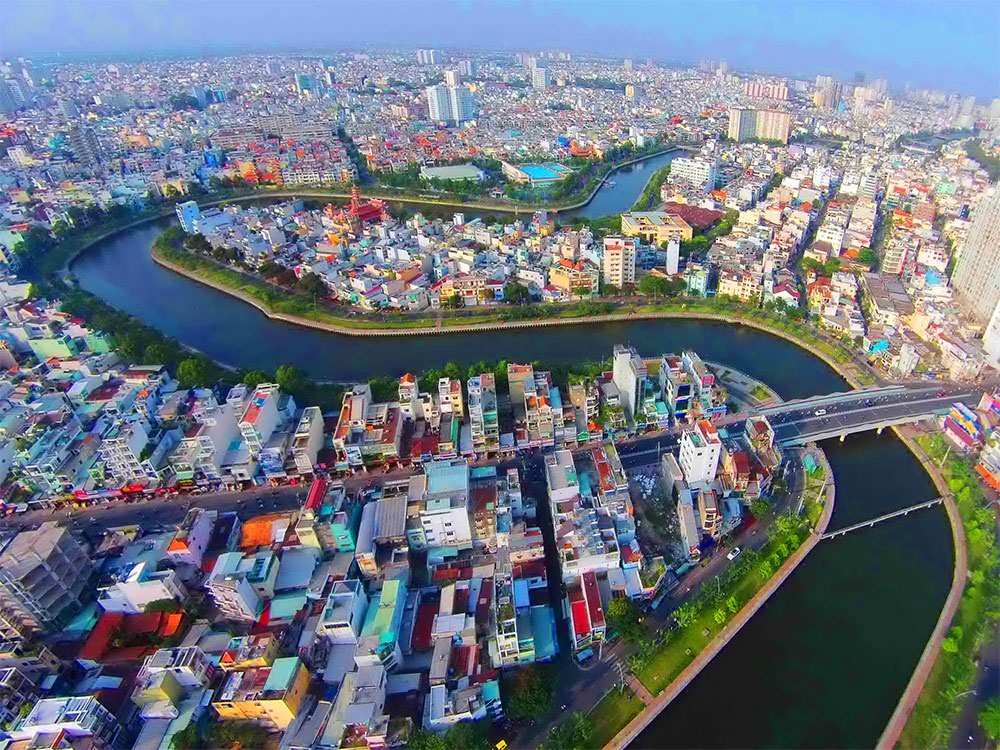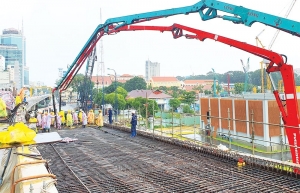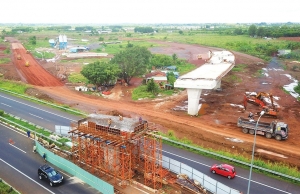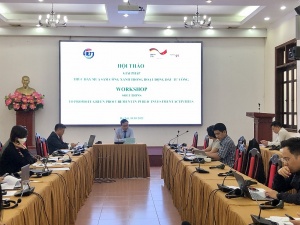Orders made to push disbursement of public funds
Three days before the National Assembly (NA) kicked off its fourth session in Hanoi on October 20, Prime Minister Pham Minh Chinh signed and enacted Directive No.19/CT-TTg on boosting public investment disbursement.
 |
| Orders made to push disbursement of public funds, photo Le Toan |
The directive said that public investment disbursement in the first nine months of this year was VND35 trillion ($1.52 billion) or 16 per cent higher than in the same period last year, meeting 46.7 per cent of the disbursement plan earlier assigned by the prime minister. “However, the speed of disbursement remains slow, failing to meet desired requirements,” stated the directive.
The government wants to see the disbursement rate for this year reach 95-100 per cent of the plan assigned by the prime minister. The total public investment capital for 2022 is about $25.22 billion fixed by the NA.
The General Statistics Office estimates that for every 1 per cent increase in public investments, Vietnam’s GDP can rise 0.06 per cent.
The government has determined that accelerating such disbursement is one of the key political tasks of 2022 and 2023 in order to boost economic growth, and maximise the implementation of socioeconomic development goals, and “must go together with ensuring the quality of works and effectiveness of capital usage”.
“Bigger efforts and determination must be made to accomplish all targets already set in public investment disbursement, to overcome all difficulties, and with more suitable solutions taken,” the directive added.
A government report sent to the NA last week admitted that public investment disbursement continued to be a bottleneck for economic growth. It is estimated that as of September 30, total disbursement hit about $11 billion, meeting just under 46.7 per cent of the disbursement plan earlier assigned by the prime minister and lower than the rate of 47.38 per cent in the same period last year.
“Slow disbursement will continue having negative impacts on the goals for economic growth, and reducing the effectiveness of capital usage,” stated Vu Hong Thanh, chairman of the National Assembly Economic Committee. “Though the government has highlighted three groups of reasons behind the slow disbursement (see box), it is recommended that the government continue proposing specific solutions so that this grey disbursement situation can be solved as soon as possible.”
The government has also said that all projects with slow disbursement will see their capital transferred to other projects which are implemented effectively but suffering from capital shortages. Leaders of ministries and localities with ineffective projects will face possible punishments.
Since early this year, the government and Prime Minister Chinh have promulgated directive documents and organised three online conferences on disbursement.
At the same time, six working groups have been established, headed by four deputy prime ministers and the ministers of planning and investment and finance.
 | Vietnamese exports await offset from crucial public investment activities Disbursement of public investment is expected to offset the decrease in exports, but the level of compensation depends greatly on the current progress of capital disbursement. |
 | Public investment hits forward motion Overcoming a number of socioeconomic difficulties, local public spending disbursement has been accelerating nationwide to ensure goals are reached. |
 | Looking for green procurement solutions in public investment Renovating the country's growth model towards green procurement, sustainable development, green growth, and the circular economy is an essential solution in the battle to fight climate change, according to a recent workshop. |
What the stars mean:
★ Poor ★ ★ Promising ★★★ Good ★★★★ Very good ★★★★★ Exceptional
Related Contents
Latest News
More News
- EVN launches major power infrastructure projects nationwide (December 19, 2025 | 18:17)
- VAL inaugurates second production line to meet domestic animal feed demand (December 19, 2025 | 16:37)
- Sun Group pioneers urban tram system in Phu Quoc (December 19, 2025 | 15:00)
- Seven major projects launched to drive Hanoi’s next growth phase (December 19, 2025 | 14:00)
- Securing capital and efficiency for Vietnam’s 2026-2030 growth ambitions (December 17, 2025 | 10:00)
- Vietnam bucking trend in the global M&A landscape (December 16, 2025 | 14:20)
- HDS Summit spotlights Vietnam’s rising role in regional supply chains (December 16, 2025 | 08:00)
- Kolon signs $48 million airbag supply deal with Autoliv (December 15, 2025 | 18:14)
- National Assembly approves Vinh–Thanh Thuy expressway project (December 15, 2025 | 18:02)
- Quang Tri green-lights $1.59 billion LNG-fired power project (December 15, 2025 | 17:59)

 Tag:
Tag:






















 Mobile Version
Mobile Version